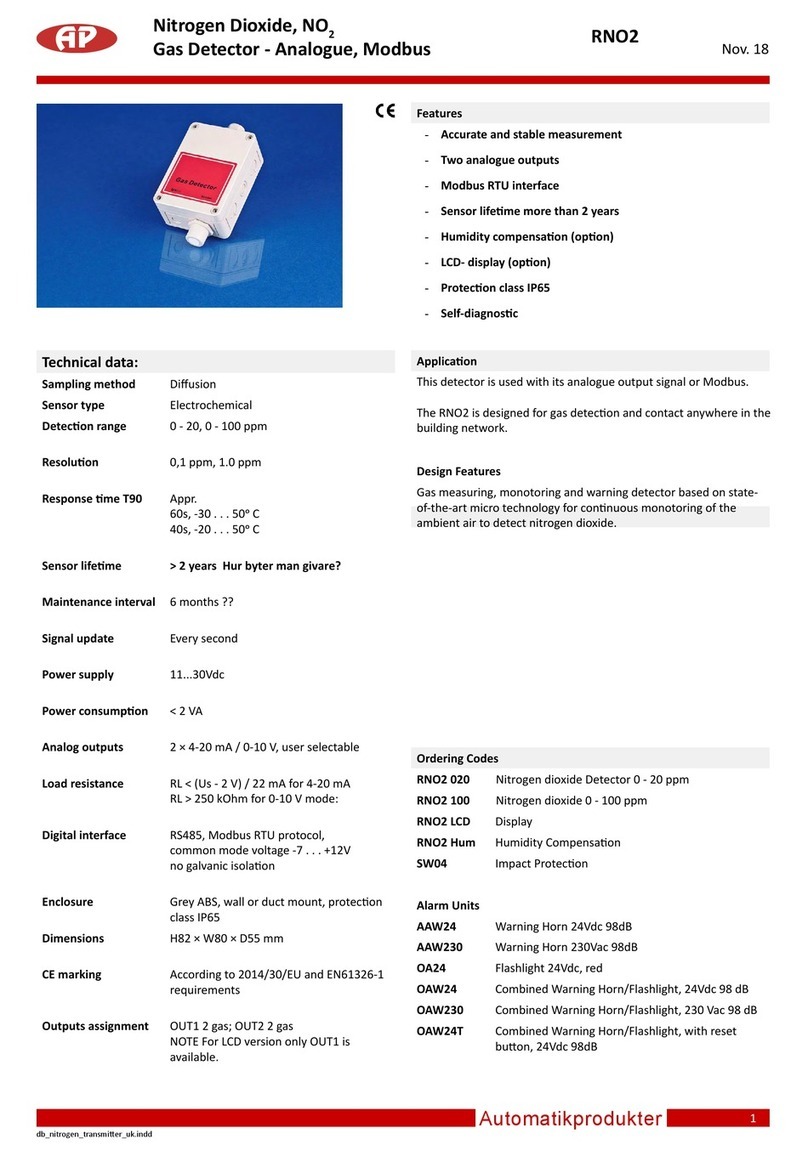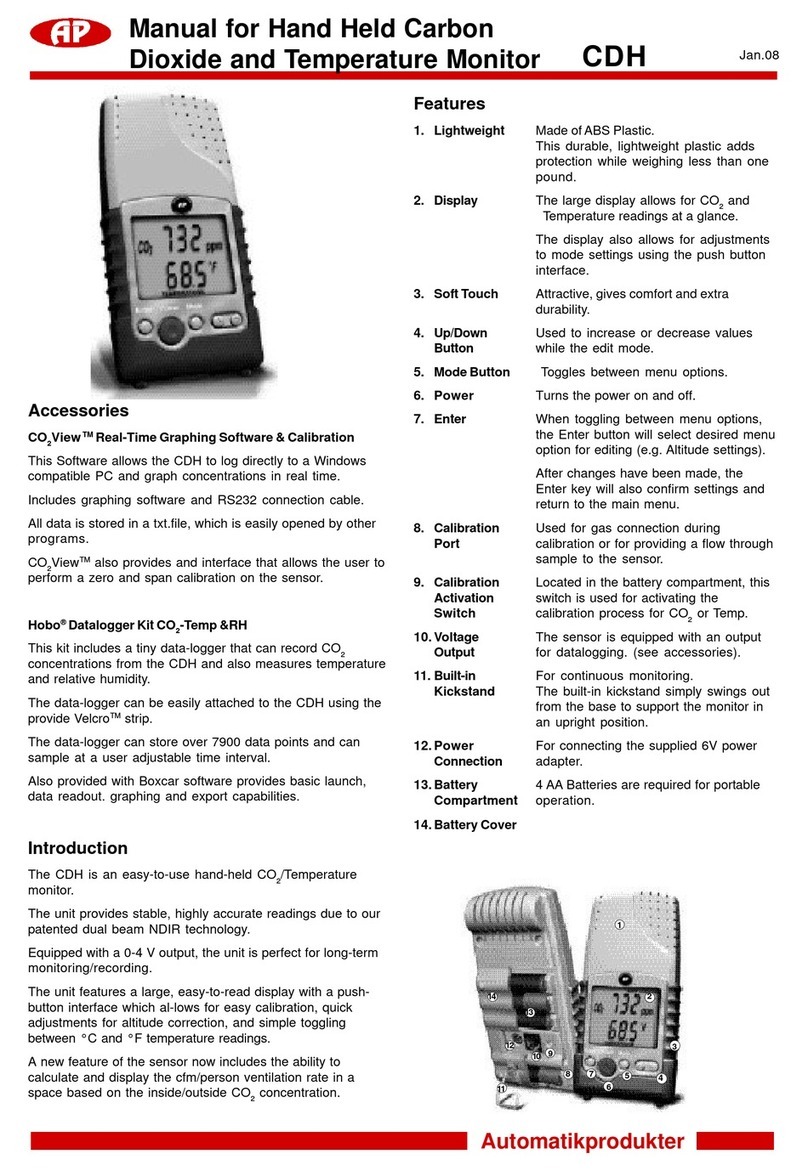
Automatikprodukter
Ammonia detector - Manual NH3/ENH3 April.10
Electrochemical Transmitter
6 ServiceandInspection
6.1 Inspections
Inspection, service and calibration of the transmitters have to be done by trained technicians and executed at
regular intervals.
We therefore recommend to conclude a service contract with AP or one of their authorized partners.
6.2 Calibration
(See section 5.1 and 5.2)
•At commissioning and at periodic intervals determined by the person responsible for the gas detection system
(recommendation: every 6 months)
•After exchange of the sensor
•If in case of operational or climatic influences the sensitivity of the sensor falls below 30 % in operation, calibration
will not be possible any more.
Then the sensor has to be replaced.
6.3 Exchange of Sensor Element
Consider static electricity! See point 3.
Sensor should always be installed without voltage applied.
•Unplug basic PCB carefully from the terminal blocks on base.
•Unplug old sensor element from the PCB.
•Take new sensor element out of original packing.
•Plug in sensor element into the PCB at X3.
•Plug in carefully the PCB into terminal block X4, X5.
•Calibrate according to section 5.
7 Troubleshooting
7.1 Analog Mode
Trouble Cause Solution
Output signal < 3 mA / 1,5 V Jumper 0-20 % not set Check jumper position
and/or control voltage < 30 mV
only for starting signal 2V/4 mA Power voltage not applied Measure tension at X4:
Two-wire: Pin 1 (+) and 4 (-)
Three-wire: Pin 1 (+) and 2 (-)
PCB not plugged in correctly
at X4 and X5 Replug PCB correctly
Wire break Check the wiring
____________________________________________________________________________________________________
Output signal > 22 mA /220 mV Short-circuit Check the wiring
_________________________________________________________________________________________________
Control voltage does not reach
the calculated value Sensor element not calibrated Calibrate sensor element
Sensor sensitivity < 30 % Replace sensor element
___________________________________________________________________________________________________
No reaction of the output signal
in spite of gas concentration Power voltage not applied Measure tension at X4
Signal (Pin 4) not wired correctly Check the wiring




























